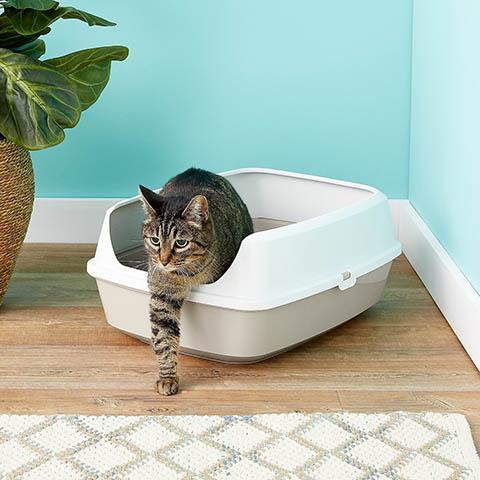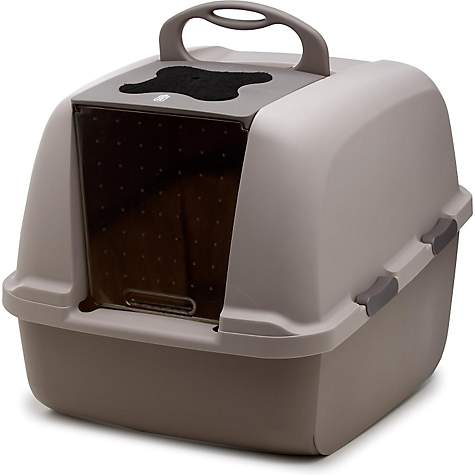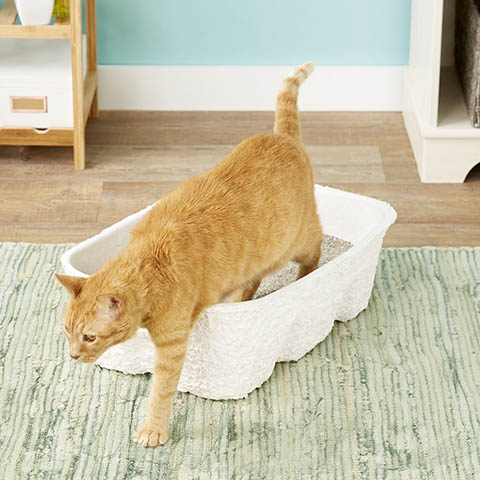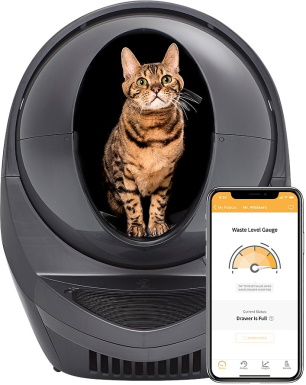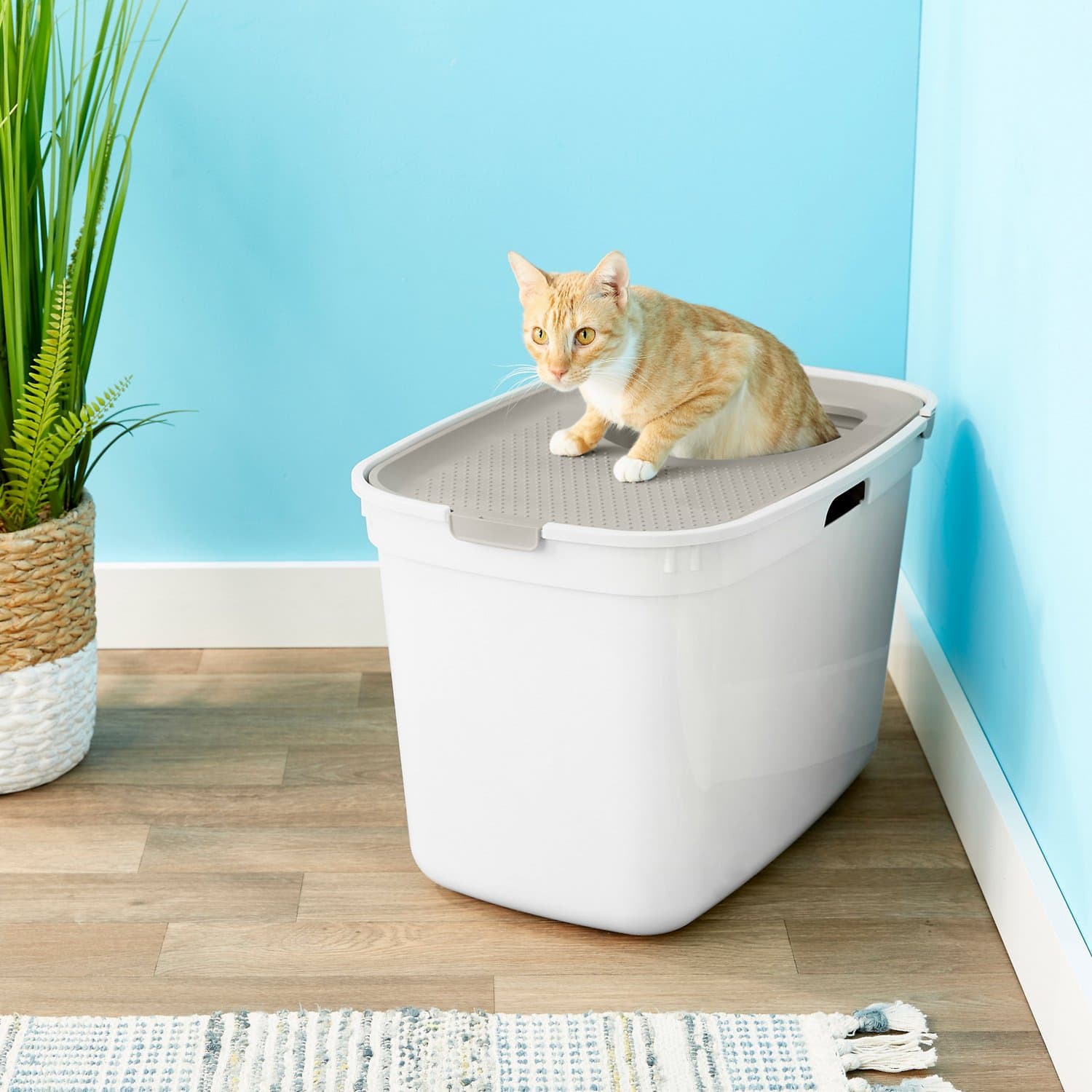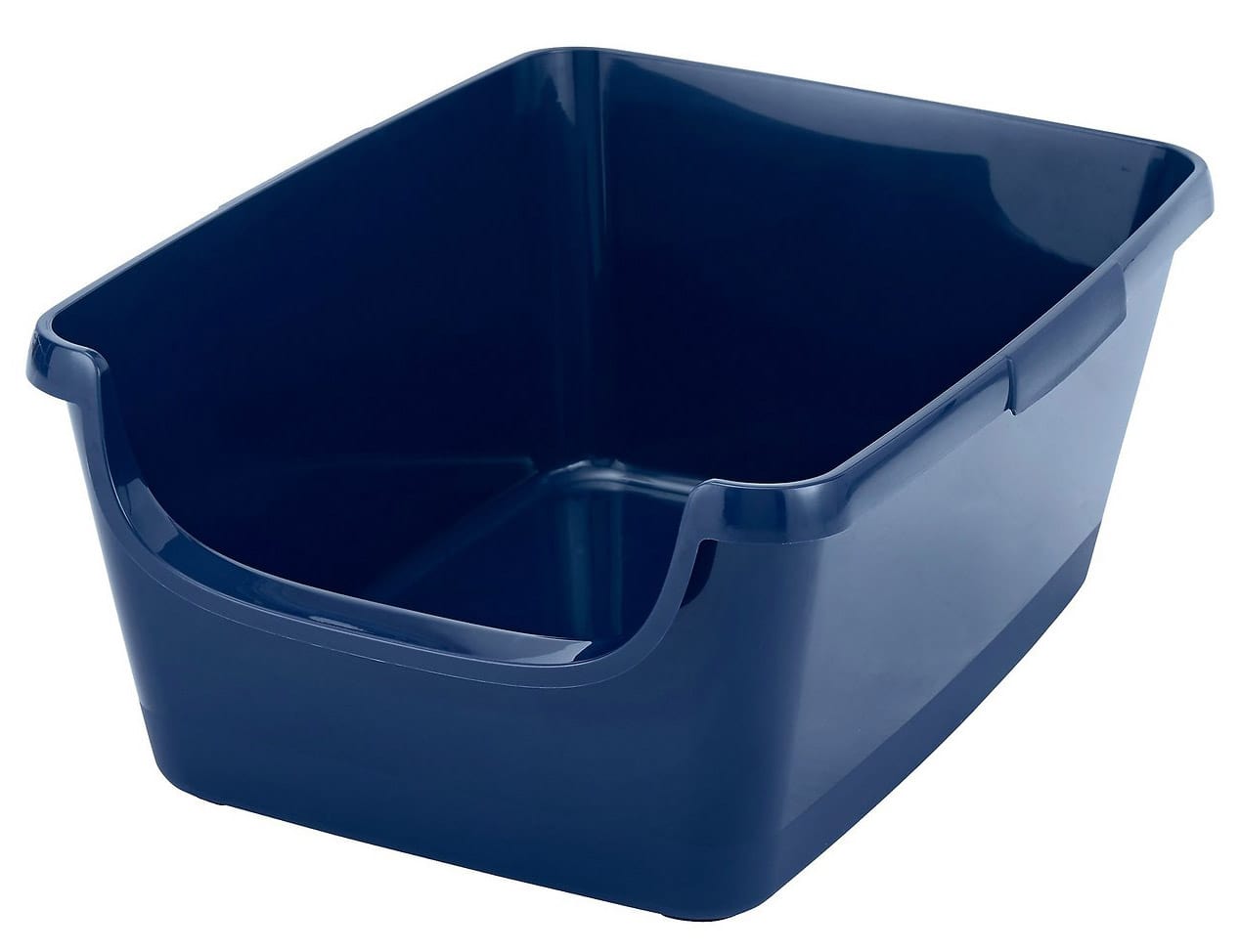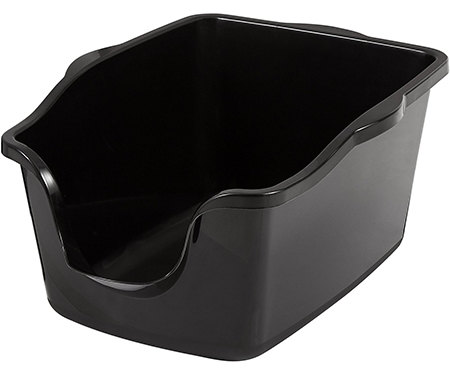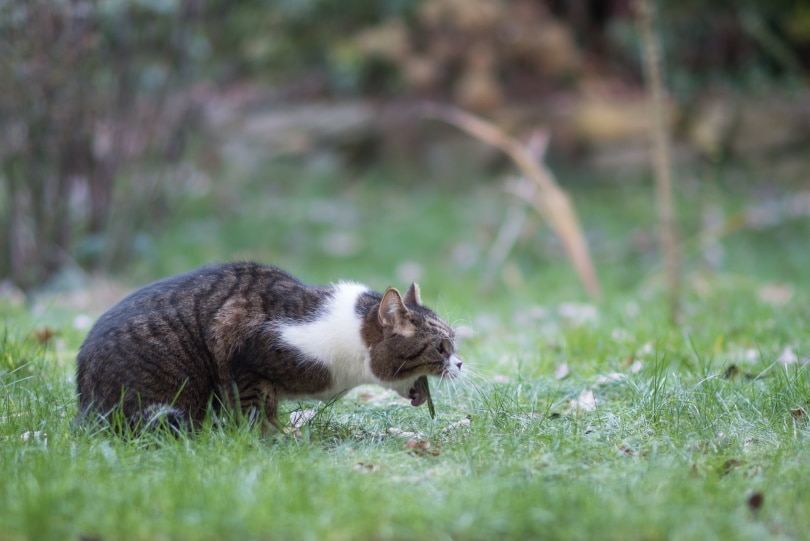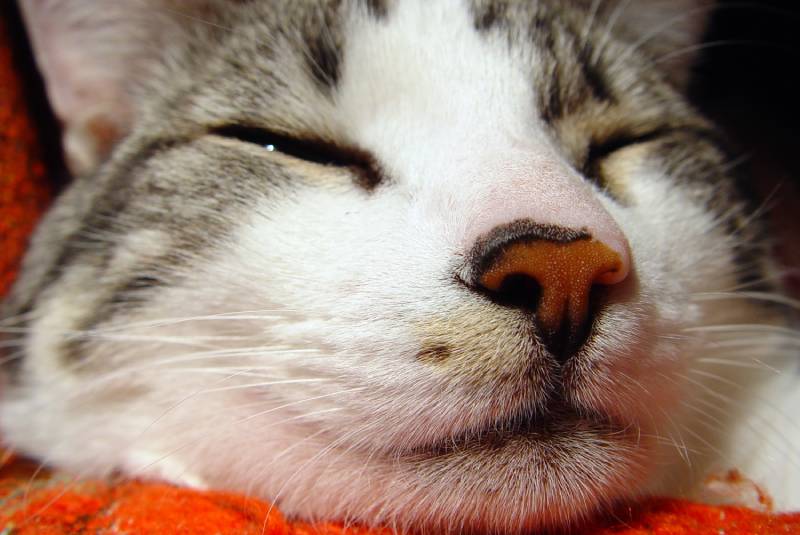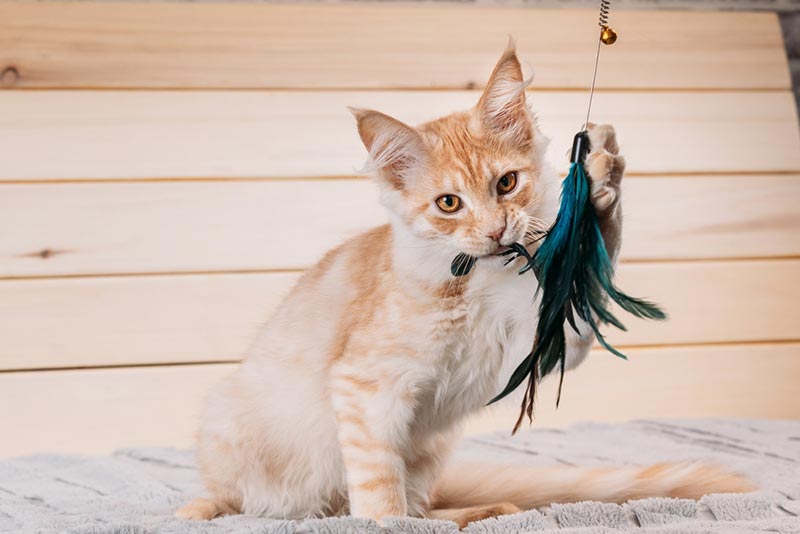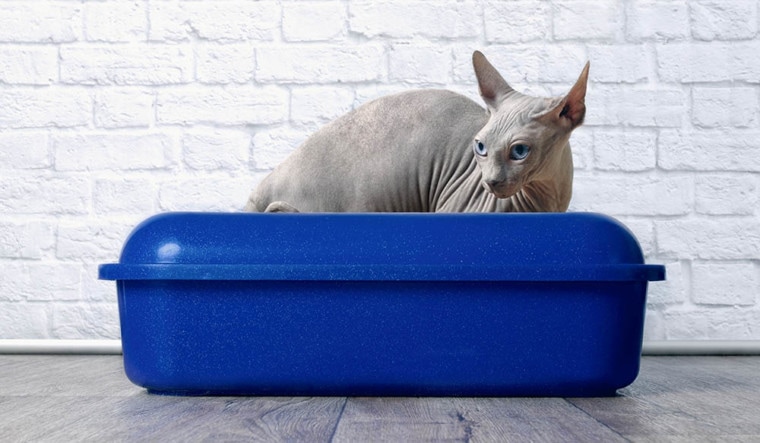
Whether you’re a veteran cat owner or it’s your first time, one of the first pieces of “cat” equipment you’ll buy is a litter box. While it’s considered essential, most people don’t give a whole lot of thought to the litter box itself. Particularly for new cat owners, litter boxes might all look the same.
The truth is, not all litter boxes are created equal. Cats can be very particular about their bathroom facilities. Shape, size, depth, and many other attributes can play a role in how your cat feels about her litter box.
To aid you in your search, let’s take a look at the different kinds of litter boxes.
The 10 Types of Cat Litter Boxes
1. Open litter boxes
Open cat litter boxes are simple. Sometimes referred to as litter pans, these are large, uncovered pans that you fill with cat litter. They’re not fancy, but they do the job.
2. Covered litter boxes
Covered boxes are identical to uncovered boxes, except they have a lid. Most of them are simple covers with an opening for entry and exit, but some can be very elaborate with domes and swinging doors.
3. Disposable litter pans
As the name implies, disposable litter pans are made from sturdy plastic and designed to be thrown out after use.
4. Self-Cleaning litter boxes
No cat owner loves cleaning out the litter box. These litter boxes were designed to take this chore off your list. Self-cleaning litter boxes are basic litter pans. Some have a lid, some don’t, but what they all have is a motorized rake that moves back and forth through the pan on a regular basis. The rake gathers up waste and drags it into an enclosed container attached to the litter box. Most self-cleaning litter boxes have a sensor that tells them to clean shortly after your cat leaves the box, making sure no waste is in the box for any length of time.
5. Sifting litter boxes
Also called sifting pans, these are available in both open and closed styles. Sifting pans have a grate at the bottom that sits inside a separate container to help with cleaning. By periodically “sifting” the top pan side to side, you are left with the dirty clumps in the top pan to dump out into the trash.
6. Top-entry litter boxes
If litter tracking and flying litter are a problem for you, try a top-entry box. This litter box design has a tall cover with a hole in the top for entry and exit. They are higher than traditional litter boxes and fully enclosed. The lid can be removed for cleaning.
7. Corner litter boxes
There’s nothing special about the design of a corner litter box other than being shaped with a 90-degree corner to save you space. These are sold as open or closed boxes but fit tightly into the corner of a room.
8. Extra-large litter boxes
Much like corner litter boxes, this type of litter box is an open or closed litter box that is deeper and larger than a typical box. Usually, they are bigger in all dimensions: length, width, and depth.
9. High-sided litter boxes
Many of the litter boxes recommended in this list are already high-sided, so this probably doesn’t need its own entry, but we’ll discuss it anyway in an effort to be thorough. High-sided litter boxes are different than regular-sided litter boxes as the walls are significantly higher. High-sided boxes are usually not designed with lids because the higher sides already prevent litter from spilling over the edges.
10. Designer litter boxes
Designer litter box models are essentially litter boxes in disguise. There’s nothing special about the litter pan itself, but it’s hidden out of sight within an end table, bench, or plant. Made to fit in with your home’s décor, you can park your cat’s litter box in the middle of the living room, and no one will know the difference.
How Many Litter Boxes Should You Have?
There are many reasons to have multiple litter boxes, even in single cat households. Cats like options, and the more space they have to roam, the more options they’re likely to need.
Pet experts recommend using the N+1 rule when it comes to litter boxes. That is the number of cats you own, plus one extra litter box. However, this doesn’t mean that one litter box won’t suffice. It just means you have to choose wisely and clean frequently.
If you have multiple cats that get along well, don’t fight, and share the litter box without issue, it might be found to have a single litter box. Keeping the box clean in this situation will be extra important as there is more waste, and cats don’t like using the dirty litter. It may mean cleaning the litter box multiple times a day.
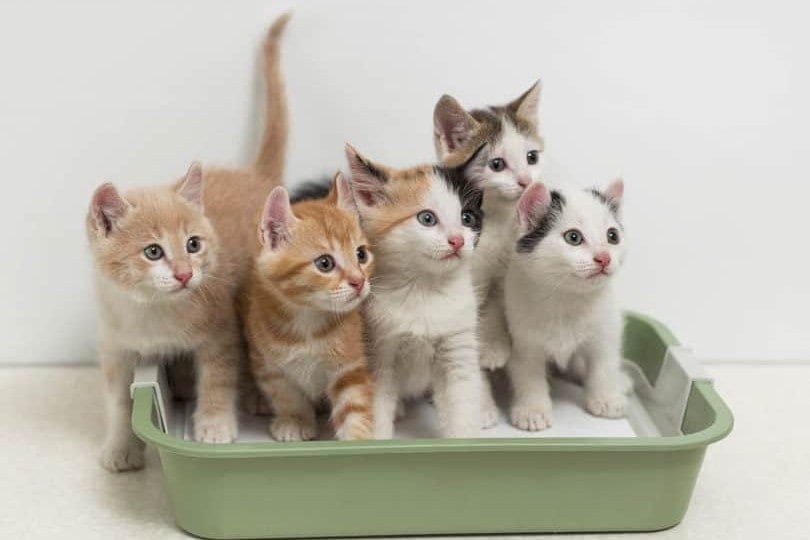
How Big Should Your Litter Box Be?
Whichever style of litter box you choose, it should be large enough for your cat to comfortably squat inside, with a little extra space. They’ll need enough room to turn around and dig without having to step a foot out of the box.
Your litter box should be at least the length of your cat, measured from their nose to the tip of their tail, and at least as wide as your cat is long (without her tail extended).
Determining Which Litter Box is Right for You
The good news is that you have lots of litter box options to choose from. The bad news is that it can be hard to choose which one your cat will like that also fits best with your lifestyle.
Take into account your cat’s personality when deciding whether to purchase an open or closed litter box. If you have a cat who prefers privacy or is shy and likes to hide, she might do better with a closed box.
Kittens and senior cats will tend to do better with low litter box sides or at least one low side for easy entry and exit. Cats with bad aim, who spray or fling their litter everywhere, probably need higher sides or closed boxes to reduce the amount of mess.

Think Outside the Box
While there’s plenty of budget-friendly litter box options out there, sometimes the best litter box for your cat is not a litter box at all. A little creativity can go a long way. If you feel like you just can’t find the right fit, here are some “out of the box” ideas that work great as cat litter boxes:
Final thoughts
Think about it in human terms. The litter box is your cat’s bathroom. Do you like your bathroom cramped for space? Or located next to a noisy washing machine? What if you had to navigate a high wall to get to your bathroom or use the bathroom in the dark? This is what it feels like for cats who have the wrong litter box. While some factors can be avoided simply by changing the litter box’s location, others are dependent on the box itself. If your litter box makes your cat feel uncomfortable or too difficult to use, they will find a different bathroom spot; it probably won’t be a spot you appreciate!
It’s hard to be “wrong” about choosing your cat’s litter box, but sometimes you will have to perform a bit of trial and error to find the best one for you and your cat. If you can’t find one that fits, there are options for making your own. In the end, the best litter box is one that suits both your cat and your lifestyle.
Related article:
- How Do Cats Automatically Know How to Use a Litter Box?
- Covered vs Uncovered Litter Boxes: Does My Cat Care?
- How to Introduce a New Litter Box to Your Cat (5 Helpful Tips)
Featured Image Credit by Lightspruch, Shutterstock


